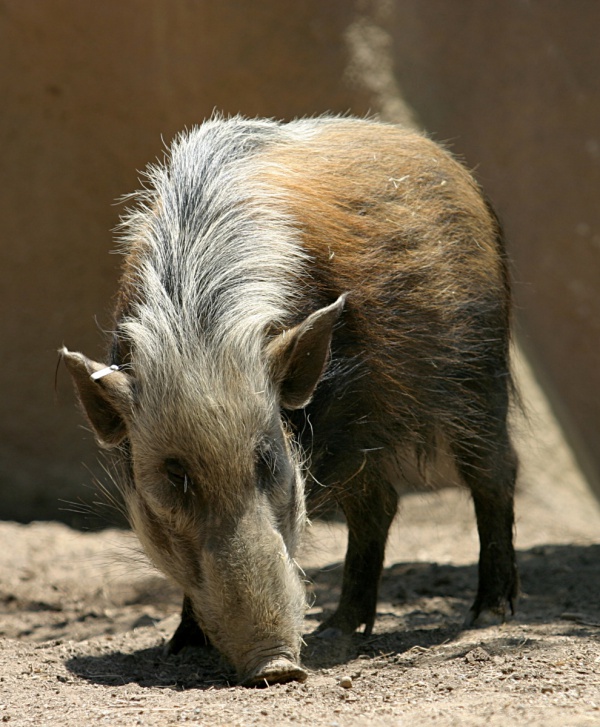Facts About Bushpig
The bushpig is a captivating member of the pig family, native to the forests, woodlands, and riverine areas of East and Southern Africa. You might also find them in Madagascar and Mayotte, where they were likely introduced. These nocturnal creatures come in various subspecies and can grow up to about 100 cm tall, with weights ranging from 55 to 150 kg.
At first glance, bushpigs might remind you of domestic pigs, but they have some distinct features such as blunt snouts, pointed ears, and cloven hooves. They are social animals, living in groups known as sounders. Notably, they can be quite aggressive, especially when defending their young.
Bushpigs are omnivorous, feeding on roots, crops, and even carrion. This varied diet often makes them a nuisance in agricultural areas, leading to frequent hunting efforts. Nonetheless, their population continues to thrive due to the availability of inaccessible terrain, abundant food sources, a lack of predators, and their ability to adapt to hunting methods.
Closely related to the red river hog, bushpigs can even interbreed with them. Their range extends from Ethiopia and Somalia down to South Africa, including Madagascar and possibly the Comoros archipelago.
There are several subspecies of bushpigs, including the Madagascar bushpig, Edwards' bushpig, White-faced bushpig, Southern bushpig, Nyasan bushpig, and Somalian bushpig. Their meat is leaner compared to pork but is not consumed in Islamic regions due to religious prohibitions.
Their presence in Madagascar and the Comoros islands is believed to be due to human intervention, possibly through domestication and transportation.

 Gabon
Gabon